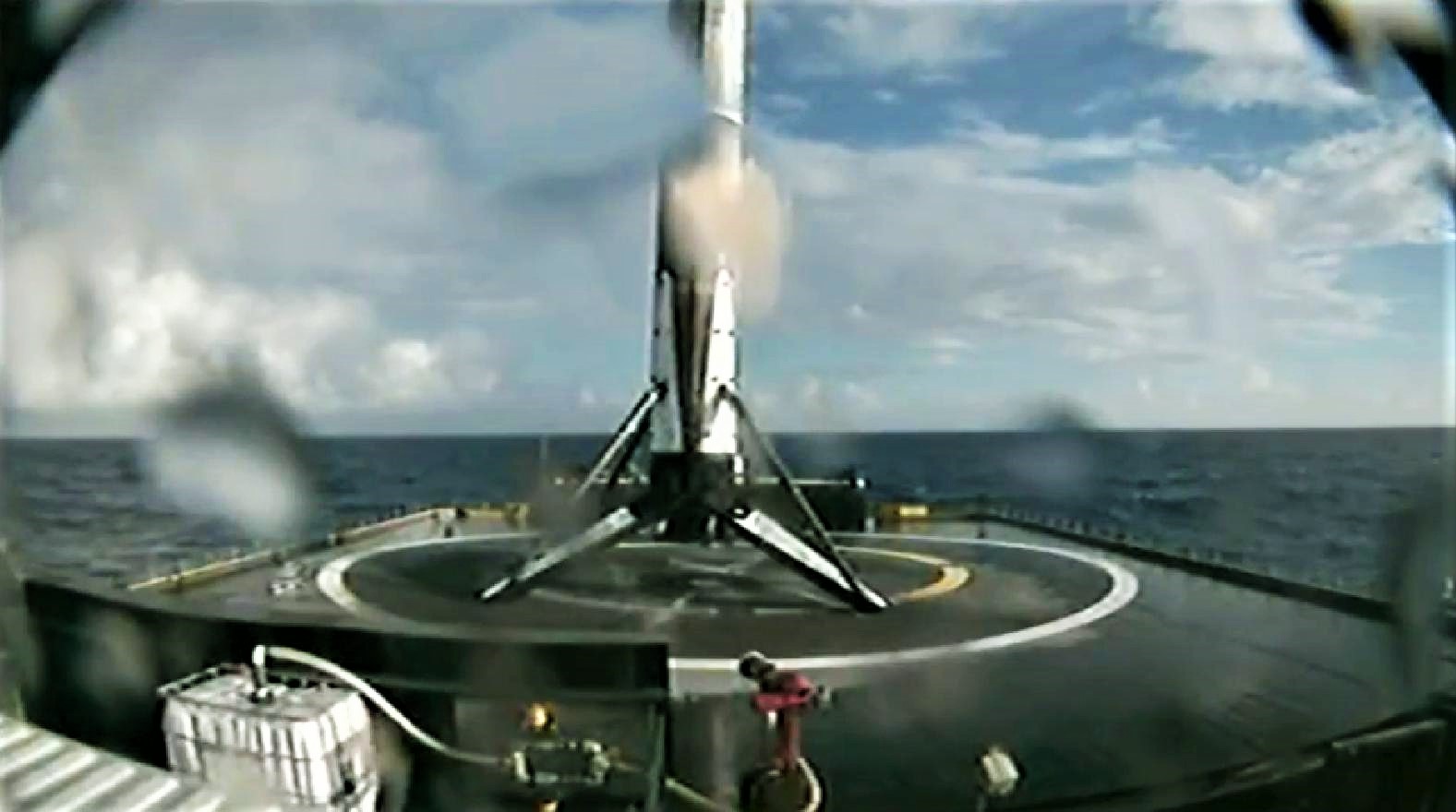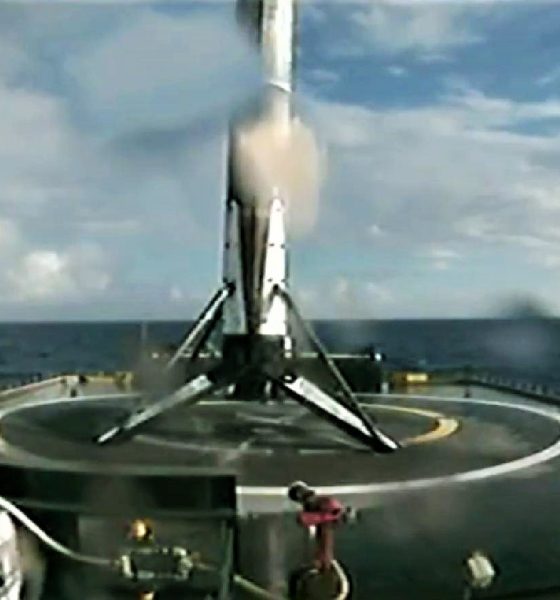

SpaceX
SpaceX’s twice-flown Falcon 9 fleet grows by one with flawless launch, landing
SpaceX has completed its 18th successful launch of 2018 while also expanding its fleet of twice-flown Falcon 9 Block 5 boosters from two to three rockets, foreshadowing a near future where most of the company’s rockets have long and storied flight histories, much like today’s airliners.
Up next for SpaceX is a mission directly related to that goal: the launch of SSO-A from Vandenberg Air Force Base is expected to make use of a twice-flown Falcon 9 booster, to become the first time the company has commercially launched the same rocket three times. The ultimate goal of Falcon 9 Block 5 is to enable at least 10 reflights with minimal refurbishment, and the 3rd reflight is the next major step in that direction.
https://twitter.com/_TomCross_/status/1063177544973869058
While we still do not have an official idea of the payload’s weight, Falcon 9 placed the roughly 3000-kg communications satellite into a geostationary transfer orbit (GTO), where Es’hail-2 will gradually climb Earth’s gravity well to a circular orbit under the power of its own small propulsion system. Once complete, it will serve the Middle East a variety of satellite communications services, including both enterprise, consumer, and government customers.
Prior to launching Es’hail-2, Falcon 9 booster B1047 placed the massive (7000+ kg) Telstar 19V commsat into a low but serviceable GTO before landing aboard drone ship Of Course I Still Love You (OCISLY). The rocket then returned to Port Canaveral and was transported to one of SpaceX’s nearby facilities for repair, refurbishment, and inspection around the end of July. According to President and COO Gwynne Shotwell, Block 5 rockets – as of September 2018 – require just four weeks or refurbishment on average. Although July-November is not exactly four weeks, it’s possible that the process was completed months ago and the rocket has simply been waiting in the wings for the availability of its next payload.
Shotwell: Falcon 9 first stages come back in much better shape than anticipated. Have refurbishment time down to four weeks; goal is still a one-day turnaround next year. #WSBW
— Jeff Foust (@jeff_foust) September 11, 2018
As it turns out, SpaceX decided to conduct the rocket’s second launch from a different launch pad, known as Pad 39A. 39A is in the process of being modified to support Crew Dragon launches, including a variety of changes to its ground support equipment, the transporter/erector (T/E), and the Fixed Service Structure (FSS), most notably signified by the installation of gleaming black and white crew access arm (CAA). While the reasoning behind the move from LC-40 to LC-39A is opaque, the likeliest explanation is that SpaceX wanted an opportunity to shake down a majority of those modifications to reduce schedule uncertainty and risk for Crew Dragon’s uncrewed launch debut, NET early January 2019.
Ultimately, as stated by a SpaceX announcer during the webcast, B1047’s successful second launch and landing aboard OCISLY paves the way for a potential third launch and landing for the rocket, perhaps just a few months away. The first triple-launch of a single Falcon 9 booster is currently penciled in for November 19th from VAFB, pending a static fire attempt either today or tomorrow.
Looking back at the sun from upper stage & Falcon 9 🚀 landed on drone ship Of Course I Still Love You pic.twitter.com/sg3FXIDQJL
— Elon Musk (@elonmusk) November 15, 2018

Elon Musk
Starlink achieves major milestones in 2025 progress report
Starlink wrapped up 2025 with impressive growth, adding more than 4.6 million new active customers and expanding service to 35 additional countries, territories, and markets.

Starlink wrapped up 2025 with impressive growth, adding more than 4.6 million new active customers and expanding service to 35 additional countries, territories, and markets. The company also completed deployment of its first-generation Direct to Cell constellation, launching over 650 satellites in just 18 months to enable cellular connectivity.
SpaceX highlighted Starlink’s impressive 2025 progress in an extensive report.
Key achievements from Starlink’s 2025 Progress
Starlink connected over 4.6 million new customers with high-speed internet while bringing service to 35 more regions worldwide in 2025. Starlink is now connecting 9.2 million people worldwide. The service achieved this just weeks after hitting its 8 million customer milestone.
Starlink is now available in 155 markets, including areas that are unreachable by traditional ISPs. As per SpaceX, Starlink has also provided over 21 million airline passengers and 20 million cruise passengers with reliable high-speed internet connectivity during their travels.
Starlink Direct to Cell
Starlink’s Direct to Cell constellation, more than 650 satellites strong, has already connected over 12 million people at least once, marking a breakthrough in global mobile coverage.
Starlink Direct to Cell is currently rolled out to 22 countries and 6 continents, with over 6 million monthly customers. Starlink Direct to Cell also has 27 MNO partners to date.
“This year, SpaceX completed deployment of the first generation of the Starlink Direct to Cell constellation, with more than 650 satellites launched to low-Earth orbit in just 18 months. Starlink Direct to Cell has connected more than 12 million people, and counting, at least once, providing life-saving connectivity when people need it most,” SpaceX wrote.
Elon Musk
Starlink passes 9 million active customers just weeks after hitting 8 million
The milestone highlights the accelerating growth of Starlink, which has now been adding over 20,000 new users per day.

SpaceX’s Starlink satellite internet service has continued its rapid global expansion, surpassing 9 million active customers just weeks after crossing the 8 million mark.
The milestone highlights the accelerating growth of Starlink, which has now been adding over 20,000 new users per day.
9 million customers
In a post on X, SpaceX stated that Starlink now serves over 9 million active users across 155 countries, territories, and markets. The company reached 8 million customers in early November, meaning it added roughly 1 million subscribers in under seven weeks, or about 21,275 new users on average per day.
“Starlink is connecting more than 9M active customers with high-speed internet across 155 countries, territories, and many other markets,” Starlink wrote in a post on its official X account. SpaceX President Gwynne Shotwell also celebrated the milestone on X. “A huge thank you to all of our customers and congrats to the Starlink team for such an incredible product,” she wrote.
That growth rate reflects both rising demand for broadband in underserved regions and Starlink’s expanding satellite constellation, which now includes more than 9,000 low-Earth-orbit satellites designed to deliver high-speed, low-latency internet worldwide.
Starlink’s momentum
Starlink’s momentum has been building up. SpaceX reported 4.6 million Starlink customers in December 2024, followed by 7 million by August 2025, and 8 million customers in November. Independent data also suggests Starlink usage is rising sharply, with Cloudflare reporting that global web traffic from Starlink users more than doubled in 2025, as noted in an Insider report.
Starlink’s momentum is increasingly tied to SpaceX’s broader financial outlook. Elon Musk has said the satellite network is “by far” the company’s largest revenue driver, and reports suggest SpaceX may be positioning itself for an initial public offering as soon as next year, with valuations estimated as high as $1.5 trillion. Musk has also suggested in the past that Starlink could have its own IPO in the future.
News
SpaceX shades airline for seeking contract with Amazon’s Starlink rival

SpaceX employees, including its CEO Elon Musk, shaded American Airlines on social media this past weekend due to the company’s reported talks with Amazon’s Starlink rival, Leo.
Starlink has been adopted by several airlines, including United Airlines, Qatar Airways, Hawaiian Airlines, WestJet, Air France, airBaltic, and others. It has gained notoriety as an extremely solid, dependable, and reliable option for airline travel, as traditional options frequently cause users to lose connection to the internet.
Many airlines have made the switch, while others continue to mull the options available to them. American Airlines is one of them.
A report from Bloomberg indicates the airline is thinking of going with a Starlink rival owned by Amazon, called Leo. It was previously referred to as Project Kuiper.
American CEO Robert Isom said (via Bloomberg):
“While there’s Starlink, there are other low-Earth-orbit satellite opportunities that we can look at. We’re making sure that American is going to have what our customers need.”
Isom also said American has been in touch with Amazon about installing Leo on its aircraft, but he would not reveal the status of any discussions with the company.
The report caught the attention of Michael Nicolls, the Vice President of Starlink Engineering at SpaceX, who said:
“Only fly on airlines with good connectivity… and only one source of good connectivity at the moment…”
CEO Elon Musk replied to Nicolls by stating that American Airlines risks losing “a lot of customers if their connectivity solution fails.”
American Airlines will lose a lot of customers if their connectivity solution fails
— Elon Musk (@elonmusk) December 14, 2025
There are over 8,000 Starlink satellites in orbit currently, offering internet coverage in over 150 countries and territories globally. SpaceX expands its array of satellites nearly every week with launches from California and Florida, aiming to offer internet access to everyone across the globe.
Currently, the company is focusing on expanding into new markets, such as Africa and Asia.








